|
In the spirit of the New Year that is upon us, like many I have been using my energy to clean house a bit and look forward to new adventures and projects; and in that spirit of cleaning and making room for new things to learn, explore, and enjoy, I dusted off an old box of collectibles that I pulled off the shelf and created a new art project for myself. I decided to invent a new art exercise based on a small random collection of old fashion catalogs and magazines that I have saved from younger years. I probably have a magazine from every decade of my life on this planet making them practically a collection of antiques. It is through these old magazines as well as my memory of an old game that I decided what I will make this project be and what I will design and paint on the twenty brand new 8” x 10” canvases that I bought for myself with a Christmas Birthday gift card. First of all, in terms of the theme of the project and my painting designs, I will share the old game that I mentioned remembering and the one in which I plan to conceptually integrate in each created canvas composition. The game I am talking about is/was known as “Twenty Questions”. It may also be remembered by the questions, “Animal, Vegetable, or Mineral?”. For me, I often remember it as the “Is it bigger than a breadbox?” game. This particular game is familiar in my imagination and memory because it is a game of questions that my family would play on road trips or long vacation drives when I was a kid. I remember my dad, who was born in 1928 and grew-up through the 1940’s and who taught all us kids this relatively old-fashioned game, would always begin the questioning by asking, “Is it bigger than a bread box?” …And in those days I remember thinking to myself, “What’s a bread box?”. - - Because of course my Captain Crunch eating, Scooby-Doo Saturday morning cartoon watching 1970’s childhood self understood from commercials and trips with my mom to the grocery, that bread is stored on a shelf in a twisty-tied brightly printed thin plastic bag spotted in the primary colors of red, blue and yellow with bubbly circles and the word “Wonder” boldly stamped across the loaf. Nowadays of course, the existence of Wonder Bread along with the game known as “Twenty Questions” or “Animal, Vegetable, or Mineral?” or the expression “Is it bigger than a breadbox?” can begin to be understood with a simple search on the internet. ( A simple internet search or “Goggle” can also bring understanding to the children’s market in the 1970’s and the culture that colored it including the breakfast cereal composed of practically 100% sugar called “Captain Crunch” as well as the original Hanna-Barbera “Scooby-Doo” cartoons { I always loved the mystery. } ) As far as a simple search on the internet about the game “Twenty Questions”, Wikipedia says: “Twenty Questions is a spoken parlor game, which encourages deductive reasoning and creativity. It originated in the United States and was played widely in the 19th century. It escalated in popularity during the late 1940s.” When googling of the words “Animal, Vegetable, Mineral” an educational website can be found that explains that the (quote): “Animal, Vegetable or Mineral Game is a travel game and activity for children of all ages that will occupy them for hours.” It goes on to outline how the game it is played:
For me in my childhood however, I always identified this game as the “Is it bigger than a breadbox?” game since over the years all us kids followed my Dad’s lead and began the game of questions with that inquiry. A google search of the words “Is it bigger than a breadbox” directed me to a page with an answer to a posted question where I could somewhat relate to the generational confusion. Here is a quote from the Q & A: Q: The other day I told my dad that I had gotten him a birthday present, and he said, “Is it bigger than a breadbox?” Where did this expression come from? A: The question “Is it bigger than a breadbox?” was popularized by Steve Allen when he was a panelist on the TV quiz show “What’s My Line.” The breadbox question became a comic refrain on “What’s My Line,” the longest-running game show in the history of prime-time network TV. It lasted for 18 seasons, from 1950 to 1967. Descriptive phrases like “no larger than a breadbox” and “not much bigger than a breadbox” were known in the 1940s. But it was Allen’s “Is it bigger than a breadbox?” that kept the usage alive long after breadboxes were a distant memory. Now that the game with the collective understanding of an animal, a vegetable, and a mineral has been reviewed, I will share the concept of my new art project. My project is to take a figure from the old catalogues or magazines I have and paint her on canvas in a composition that also somehow includes what could be classified as an animal, a vegetable, and a mineral. - - That is it. Think of and include all three. Those are the only parameters of my made-up project. On the surface I may ask myself or want to explain why I am doing this art exercise. Of course I know that I could come up with a multitude of answers to that question because I know that there are layers of meaning and creativity involved; but essentially the most basic and true answer to that question is that I like to draw and paint animals and flowers and plants and all of earth’s bounty, and I also like to draw and paint still life. I like to draw and paint people and figures and faces; and I like to create abstract paintings as well as being attracted to a degree to the art of realism. Finally, I want to make note about my little pile of random fashion magazine finds from younger days. Considering that my stack of periodicals is a collection of old magazines and catalogs some of which date back to the 1960’s, the 1970’s, the 1980’s and the 1990’s and all of which are mostly just composed of elaborate full page ads, it is not surprising to me that I recognize that demographically, culturally, and physically speaking the diversity represented is limited. Also considering that the females were called ‘models’ meaning they were molded and fashioned to represent a somewhat narrow ideal or model to appeal to the era, it is not hard to observe and measure a limited profile in terms of attributes; so at times I choose to alter them and their colors as I did with the colors of their hair and their clothes in these painted canvases pictured. I have also taken the liberty to redesign their fashions and most of the painted fabrics as well. “High fashion” and whatever that may be or may have been is not necessary the study here. Essentially, I selected a figure to incorporate into the painting based mainly on her posture or expression. I then take the liberty to alter those expressions a little at times as well. ( It is a similar exercise to the ones I explained about it the blogs: “Calendars, Planners, Doodles, and Painting” and “Sketchbook Afternoon” and even in a painting in the blog “Air to Water: The Revolution of Ten Koi” ). When looking through the catalogues and magazines, it is basically just a few of these physically expressive captures of the photographed fashion figure that I am looking for so that I can animate some created subject through the paintings and invented integrated scenes that I completely imagine then piece together and create. Needless to say then, in view of these old magazines I got inspiration from, maybe it is pretty much understood that the figures from this era are not necessarily a study or profile in diversity culturally or otherwise. This is just a point I wanted to recognize especially in this new year of 2022 when challenges to expand diverse representation are striving to be understood. Nevertheless, at the same time, I remind myself that these are my catalogs and magazines. These are my catalogs and magazines that came into my hands because they were marketing to someone of my cultural profile that was actually in a position to consider buying all they were trying to sell. Pictured below are the first four canvases I played with in my painted “Animal, Vegetable, Mineral”/“Is it bigger than a breadbox?”/“Twenty Questions” inspired paintings which I titled “TV Land”, “Saturn”, “December”, and “Parrot Wallpaper”. On these canvases the most obviously identifiable classified elements, subjects, or objects of a TV and chair, playing cards, globe, fully-full margarita glass, flamingo, owl, domestic cat, parrot motifs, garden with orange or peach trees, forest and fall leaves, red flowers in a crystal vase, and a lime are the most easily seen. “TV Land” “TV Land” painting by the actual TV in different lighting: “Saturn” “Saturn” painting in sunlight: “December” …And for the fourth piece in this series that I called “Parrot Wallpaper”, I designed each element on the canvas by first taking a picture of a fully-full margarita glass then painting it. Then I searched for some images of classic vintage cat-eyed sunglasses to further the fashion of a model in a magazine with a head scarf; and then like on the other canvases, I had fun designing and creating elements of the setting like the stylized parrot motif wallpaper I made-up to fill in for the *animal* part of this composition. "Parrot Wallpaper" Continuing with the canvases, see #7, #8, #9, and #10 in the blog: 7,8,9, and 10: “Skateland USA”, “Strawberry Fields in an Octopus's Garden”, “Boxes and Butterflies Under a Billowy Cloud for Canvas #9”, and “Sea Turtle Café” Find an additional blogs for this October 2022 and my Canvas #12 in
this series of paintings here: Canvas #12: "Six Elements Plus Six Green Figurines"
0 Comments
Leave a Reply. |
AuthorI am a 'self-taught' artist who can hardly remember a day when I wasn't in the process of creating something... Thanks for visiting my site where I can share some of my work. Archives
June 2024
|
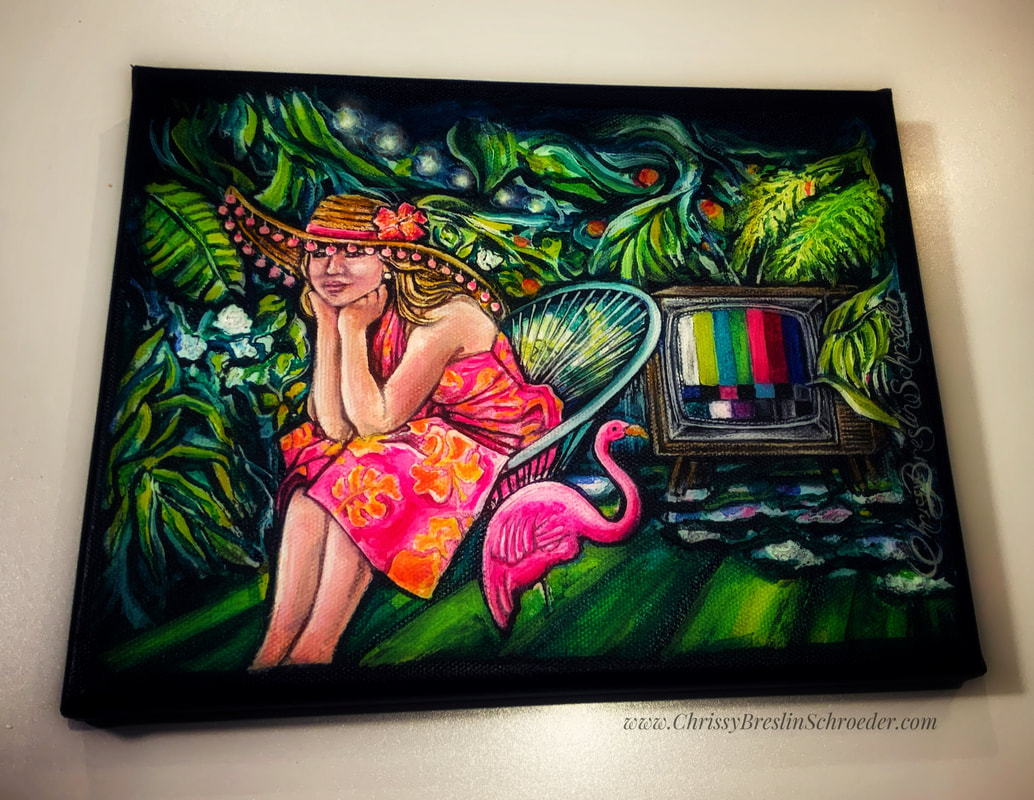
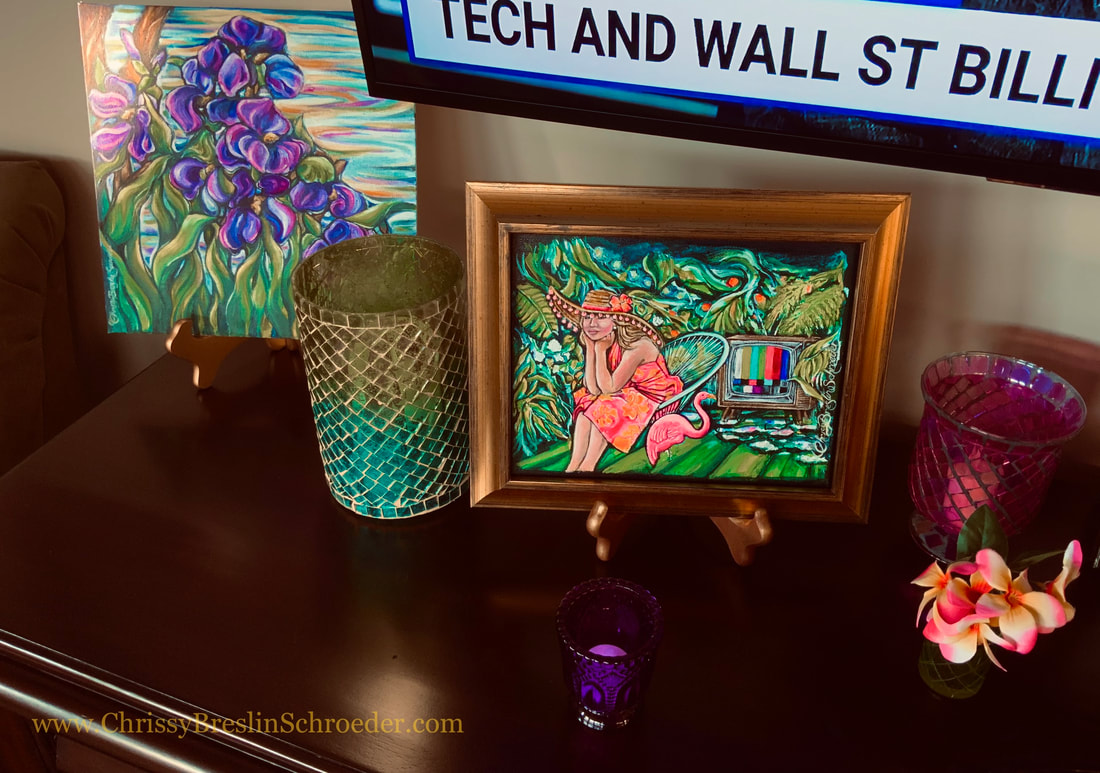
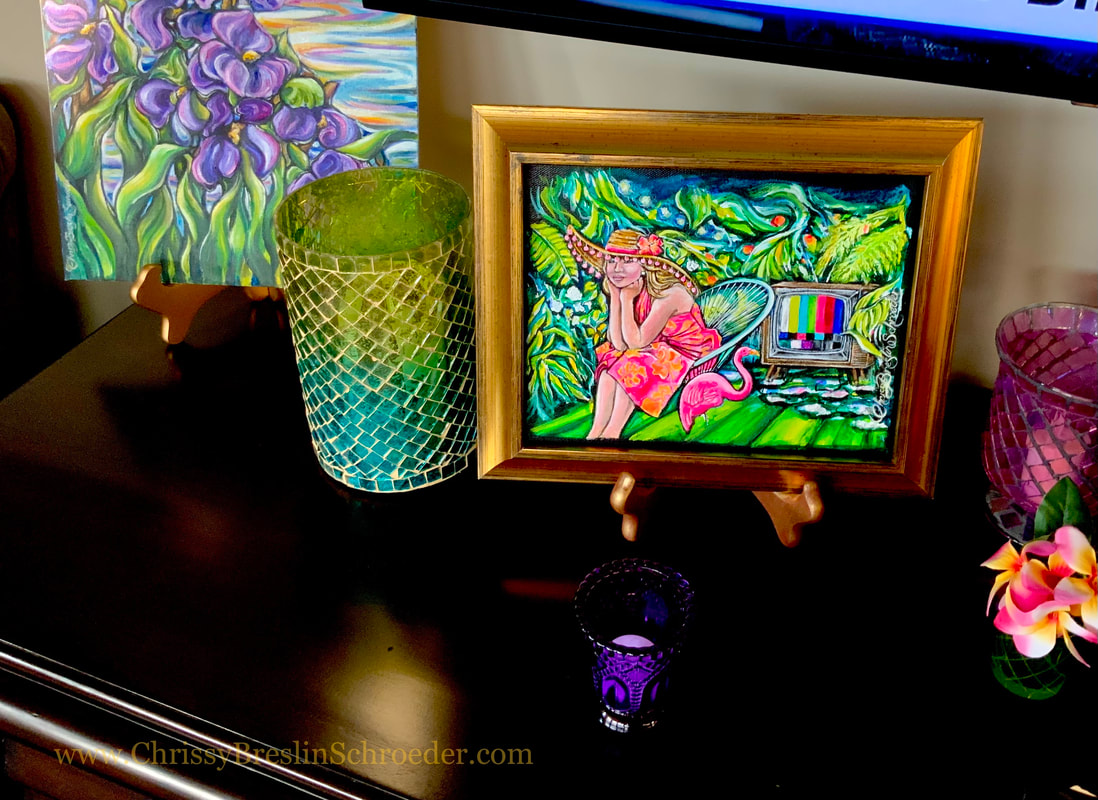
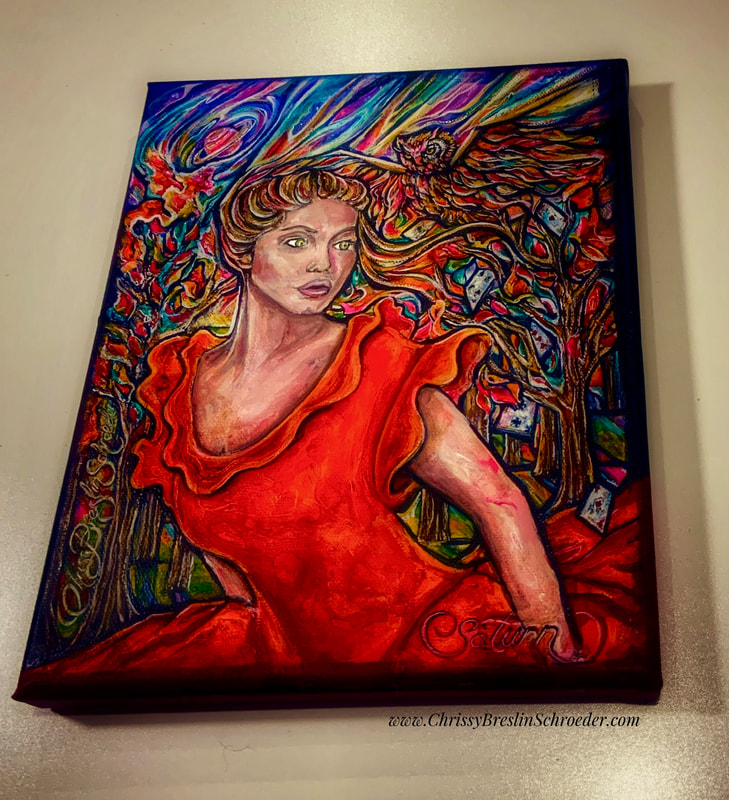
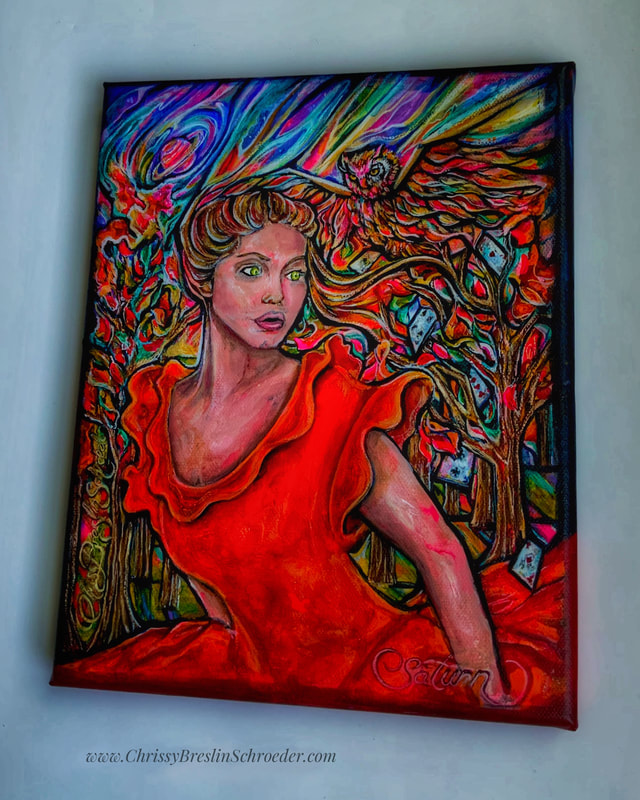
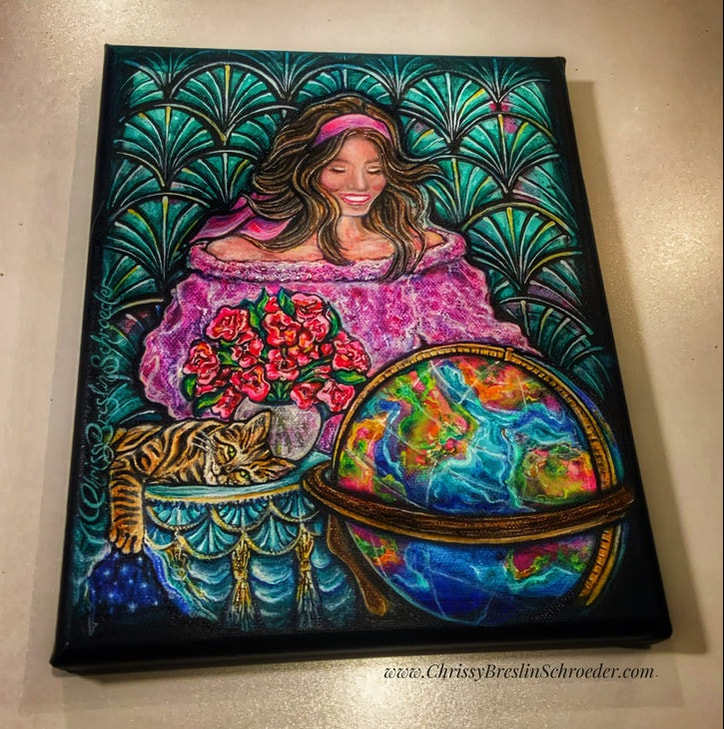
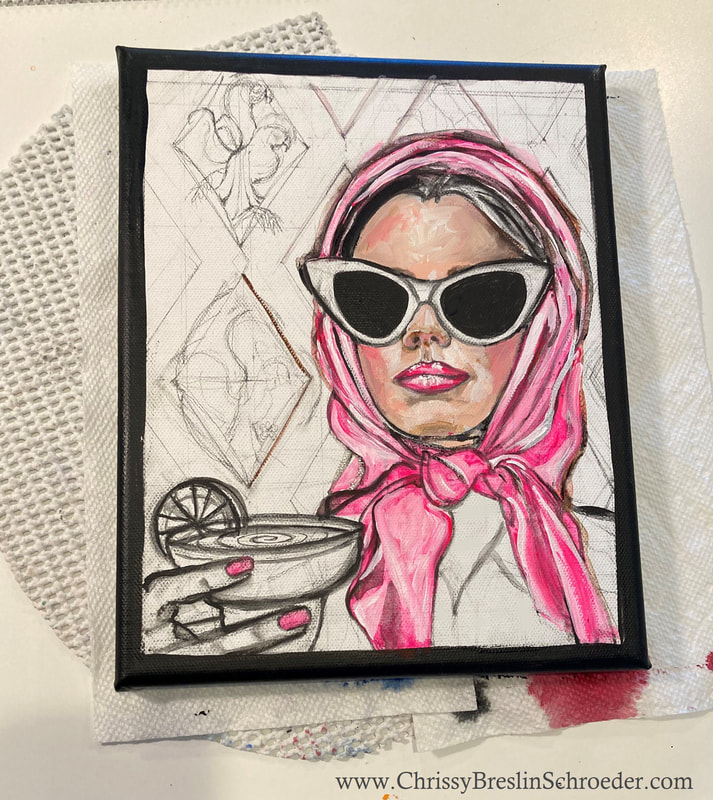
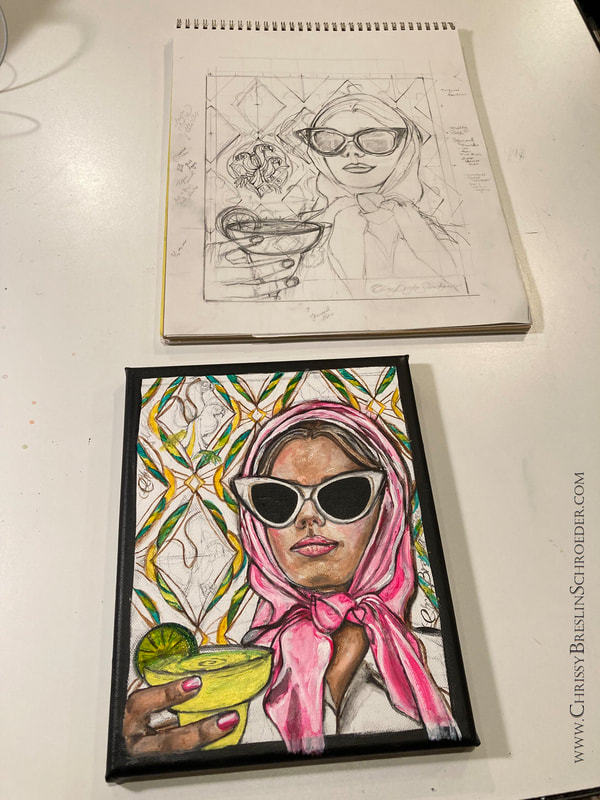
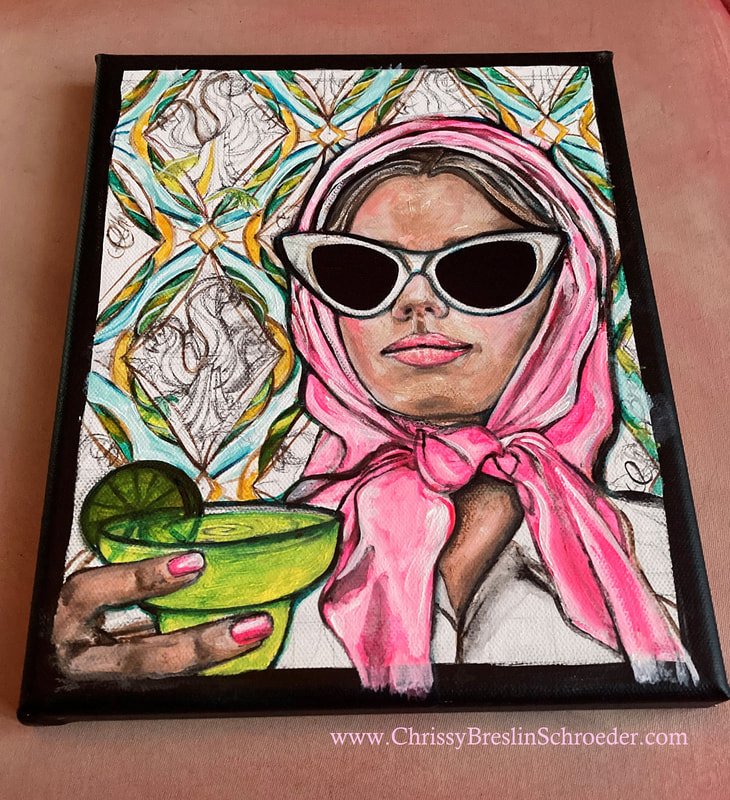
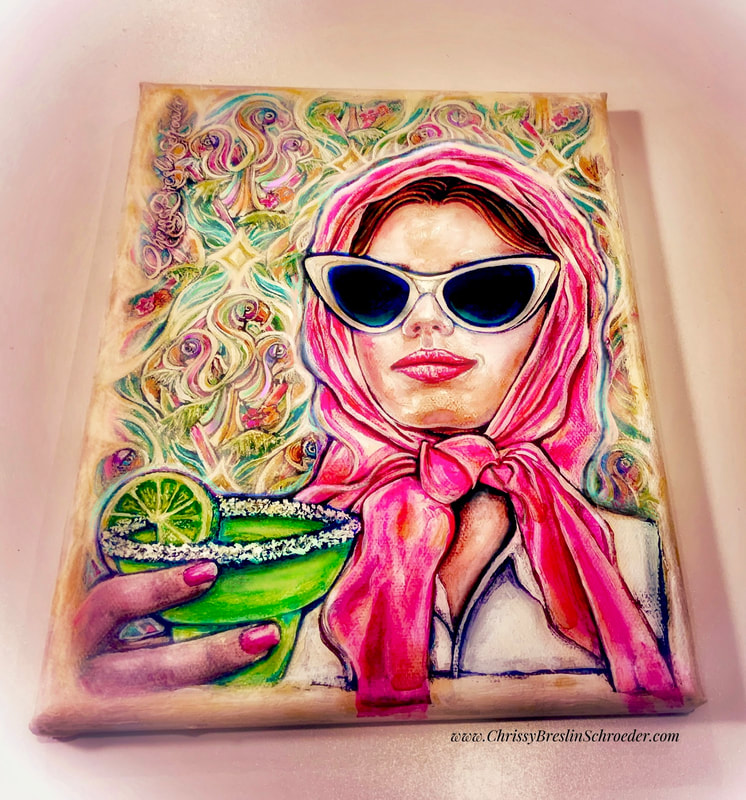
 RSS Feed
RSS Feed